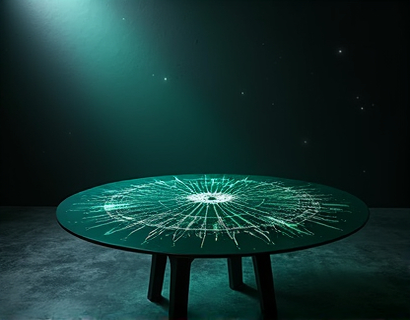Exploring the Ancient Indus Valley Civilization: Heritage and Exclusive Artifacts
The Indus Valley Civilization, one of the oldest and most advanced ancient cultures, flourished around 3300 to 1300 BCE in the regions now known as Pakistan and northwestern India. This civilization, known for its urban planning, sophisticated water management systems, and unique art, offers a rich tapestry of history for enthusiasts and scholars to explore. Delving into the artifacts and sites associated with this civilization provides invaluable insights into the daily life, beliefs, and achievements of its people.
The Indus Valley Civilization is often referred to as the Harappan Civilization, named after the city of Harappa, one of the first sites discovered and excavated in the 1920s. The civilization is divided into two main phases: the Early Harappan (3300-2600 BCE) and the Mature Harappan (2600-1900 BCE), followed by the Late Harappan period (1900-1300 BCE). This timeline marks significant developments in urbanization, trade, and cultural practices.
Urban Planning and Architecture
One of the most remarkable aspects of the Indus Valley Civilization is its advanced urban planning. Cities like Harappa, Mohenjo-Daro, and Dholavira were built with a grid system, featuring straight streets and well-planned drainage systems. The cities were divided into two main areas: the citadel and the lower town. The citadel, often elevated, housed public buildings and granaries, while the lower town contained residential areas and workshops.
The architecture of the Indus Valley Civilization is characterized by the use of standardized bricks, precisely cut and laid without the use of mortar. Houses had multiple stories, with rooms arranged around central courtyards. The use of baked bricks not only provided structural stability but also facilitated efficient drainage and waste management. The Great Bath at Mohenjo-Daro, a large public structure with a sophisticated waterproof lining, exemplifies the civilization's engineering prowess.
Water Management and Sanitation
The Indus Valley Civilization's approach to water management and sanitation was remarkably advanced for its time. Each house had access to a private well or a public water system, ensuring a steady supply of clean water. The cities featured sophisticated drainage systems, with covered drains running alongside the streets. These drains were connected to covered sewage channels beneath the streets, effectively removing waste from the living areas.
Public baths, such as the Great Bath at Mohenjo-Daro, were equipped with elaborate drainage systems, indicating the importance of cleanliness in daily life. The presence of bathrooms in most houses further underscores the civilization's emphasis on personal hygiene. This level of urban planning and sanitation suggests a high degree of social organization and a strong sense of community.
Trade and Economy
The Indus Valley Civilization was a hub of trade and commerce, with extensive networks reaching as far as Mesopotamia and the Persian Gulf. Archaeological evidence, including weights and measures, suggests a standardized system for trade, facilitating fair transactions. The civilization's merchants traded a variety of goods, including cotton textiles, pottery, jewelry, and precious stones.
Seals and tokens found at various sites indicate a complex administrative system, possibly used for record-keeping and trade documentation. The discovery of weights in different shapes and sizes, often inscribed with numerical values, points to a standardized system of measurement. This level of economic organization highlights the civilization's sophistication and its ability to support a large and thriving population.
Art and Craftsmanship
The art of the Indus Valley Civilization is characterized by its realism and attention to detail. Figurines, often made from clay or steatite, depict a wide range of subjects, including animals, humans, and deities. The famous "Dancing Girl" and "Priest-King" figurines showcase the artists' skill in capturing human forms and expressions.
Jewelry and decorative items, such as beads made from carnelian, lapis lazuli, and other materials, were highly valued. The craftsmanship of these items reflects a deep understanding of materials and techniques. Seals, often used for administrative purposes, feature intricate carvings of animals, gods, and symbolic motifs, providing insights into the civilization's religious and cultural beliefs.
Religion and Beliefs
While the religious practices of the Indus Valley Civilization are not fully understood, archaeological findings suggest a polytheistic belief system. The presence of numerous small figurines, possibly representing deities, indicates a rich spiritual life. The Great Bath and other ritual structures suggest that water played a significant role in religious ceremonies.
Animal motifs, such as bulls, elephants, and birds, frequently appear in art and seals, hinting at their importance in religious contexts. The lack of monumental temples or altars, unlike in other ancient civilizations, suggests that religious practices may have been more decentralized and integrated into daily life.
Decline and Legacy
The decline of the Indus Valley Civilization remains a subject of debate among scholars. Factors such as climate change, environmental degradation, and invasions by nomadic tribes have been proposed. The civilization's decline around 1900 BCE marked the end of its urban centers, but its influence continued through the Vedic period and beyond.
The legacy of the Indus Valley Civilization is evident in the cultural and technological advancements it contributed to South Asian history. Its urban planning, water management systems, and craftsmanship set a standard that influenced later civilizations. Today, the artifacts and sites associated with this ancient culture continue to fascinate and educate, offering a window into one of the world's earliest urban societies.
Exploring Exclusive Artifacts
For those eager to delve deeper into the Indus Valley Civilization, exploring exclusive artifacts provides a unique and enriching experience. Artifacts such as the bronze statuettes from Mohenjo-Daro, the terracotta figurines from Chanhu-daro, and the intricate seals from Lothal offer tangible connections to this ancient culture.
These artifacts, often displayed in museums or through academic publications, showcase the civilization's artistry and craftsmanship. Each piece tells a story, whether it's the daily life of a craftsman, the religious practices of a community, or the trade connections with distant lands. Collecting and studying these artifacts not only honors the civilization but also deepens our understanding of its complexities and achievements.
For history enthusiasts and cultural scholars, the Indus Valley Civilization remains a treasure trove of knowledge and inspiration. By exploring its artifacts and sites, we gain valuable insights into one of the most remarkable ancient cultures, ensuring that its legacy continues to thrive in the modern world.










































